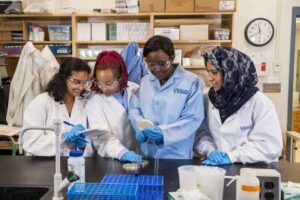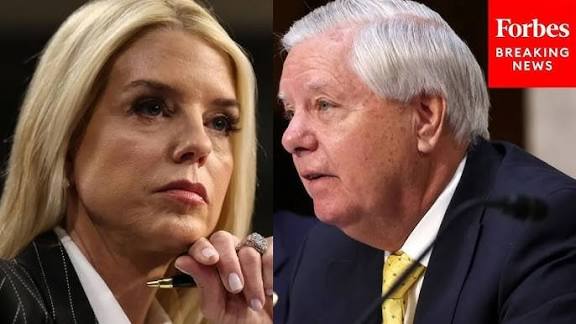University of Delaware Soars in Research: UD Went From FCS to FBS Now #47 in USA R&D Rankings

Delaware University (UD) saw an important jump in the research rankings, which ranks 78th to 47th in the National Science Foundation (NSF) HERD survey. Today we will discuss about University of Delaware Soars in Research: UD Went From FCS to FBS Now #47 in USA R&D Rankings
University of Delaware Soars in Research: UD Went From FCS to FBS Now #47 in USA R&D Rankings
The University of Delaware (UD) has long been recognized as a solid institution in higher education, but in recent years it has made bold moves—both in athletics and academics—that mark a new phase of ambition and excellence. In a striking turn of events, UD has soared in national research standings, now ranking #47 out of 626 U.S. universities in non-medical R&D expenditures, per the NSF HERD survey. Simultaneously, UD is making the leap in athletics—transitioning from the Football Championship Subdivision (FCS) to the more prominent Football Bowl Subdivision (FBS) in 2025–26.
This convergence of scholarly momentum and sports elevation offers a compelling narrative: UD’s rising research profile is aligning with institutional strategies to boost national visibility, funding, recruitment, and prestige. Below, we explore how UD reached this point, what it means, and what challenges and prospects lie ahead.
1. The Ascent in Research: From Modest to Momentum

1.1 The HERD leap: Ranking 47th in non-medical R&D
In the December 2023 announcement, UD declared that in the latest National Science Foundation Higher Education Research and Development (HERD) survey, it climbed to 47th among 626 U.S. universities when comparing non-medical school R&D expenditures. This marks a dramatic rise: just a year earlier, UD ranked 78th overall in research spending (including medical fields) across all institutions. Meanwhile, among public universities, UD’s rank moved from 73rd to 52nd.
What does this surge reflect? From FY2021 to FY2022, UD’s reported R&D expenditures jumped 59%—rising from about US$231 million to US$368 million. That kind of increase in one year signals more than organic growth; it suggests strategic investment and scaling of infrastructure, faculty, and external collaborations.
In fact, UD itself frames this rise as an entry into the top 8% nationwide for R&D activity. In the same release, UD compares itself with peer institutions: just ahead of UD are the University of Utah (46), Rutgers University (45), Iowa State (44), while it now outranks Washington State (50), University of Pittsburgh (51), and University of Missouri (52). The point: UD is claiming a seat among serious research players, even as many of these other universities are long-established in the Association of American Universities (AAU).
1.2 Underpinnings of growth: strategy, infrastructure, leadership
How did UD achieve this leap?
Strategic vision and leadership
UD’s transformation traces back, in part, to its leadership. Under President Patrick T. Harker, who assumed office in 2007, UD launched a bold “Path to Prominence” agenda emphasizing excellence in education, research, and economic engagement. Harker’s administration developed the STAR Campus (Science, Technology, and Advanced Research), a 272-acre research and innovation hub adjacent to the Newark campus, designed to catalyze technology, partnerships, and entrepreneurship in areas such as health, cybersecurity, and advanced energy.
Harker also established the Office of Economic Innovation & Partnerships, aiming to translate UD research into commercial, societal, and regional impact. In effect, UD’s leadership has long acted on a thesis: that rising research capacity should not just be academic prestige, but a driver of economic growth, reputational reach, and institutional sustainability.
Building the physical and institutional infrastructure
UD’s investment in physical infrastructure has paired with policy and administrative support. The STAR Campus itself is emblematic: by clustering labs, commercialization incubators, and partnerships in proximity, UD creates synergies in interdisciplinary research, startup incubation, and external engagement.
Moreover, UD has proactively recruited and retained faculty with strong external funding profiles, fostered cross-disciplinary centers, and improved grant support infrastructure (e.g., pre-award/post-award offices, seed funding, internal matching). While detailed internal data is less public, the overall expenditure jump suggests that UD’s strategy is working in practice.
Focused domain strengths and interdisciplinary emphasis
UD has leveraged its traditional strengths to scale research impact. Chemical engineering, in particular, remains a flagship: UD’s undergraduate chemical engineering is ranked #4 nationally in U.S. News 2025, and continues to be a point of distinction. That domain, with strong external grants, industrial linkage, and materials/energy innovation potential, acts as both reputational anchor and funding magnet.
UD is also actively scaling in engineering subfields, materials science, environmental and sustainability research, cybersecurity, and biotechnology, aligning with national priorities in clean energy, climate, and digital infrastructure. According to EduRank, UD is top-100 across 11 research topics in 2025, especially in engineering and physics.
Additionally, UD’s faculty in chemistry and computer science are ranked among the “best” scientists lists nationally in their disciplines, signaling that UD’s scholars are making footprint in highly cited areas.
2. Athletic Elevation: From FCS to FBS and Institutional Signaling
2.1 What the move is, and why it matters
In November 2023, UD officially accepted an invitation to join Conference USA as a full member starting July 1, 2025, elevating its football program from FCS (Football Championship Subdivision) to FBS (Football Bowl Subdivision). Football is the marquee component of this move, though most other varsity sports will also compete in Conference USA (CUSA). Under NCAA rules, a two-year transition period is required, with full bowl eligibility by the 2026 season.
Officials articulate multiple rationales: exposure, competition, funding, institutional branding, and recruiting leverage. In particular, moving to FBS brings UD into a higher-profile athletic echelon, likely increasing media coverage and public awareness of its academic and research missions. In the university’s own framing, the move offers “opportunities to … broaden exposure of our athletics programs … enhance awareness and visibility of our excellent academic offerings, our ground-breaking research initiatives … and enduring impact.”
From an institutional perspective, sports and research prestige can reinforce each other: a higher athletics profile may help attract more students, donors, and corporate partnerships, which in turn feeds into research capacity and reputation.
2.2 Risks and transitions
But the transition is not without pitfalls. Moving to FBS entails higher operating costs (scholarships, stadium upgrades, travel, compliance, staffing), and teams often struggle initially to compete. UD must balance investment in athletics without diverting funds from research and academics.
Further, in the two-year transition period, UD’s football team is ineligible for postseason play under NCAA rules. The first season in FBS (2025) has been appropriately dubbed a “settling-in” period. Success in athletics during transition is measured more in institutional impact than win-loss records.
Nevertheless, UD recognizes the gamble and appears preparing intensively. As Delaware Business Times noted, UD’s leaders emphasized the decision was grounded in “competition, exposure and money.”
In sum, while the leap to FBS will test the athletic department, it also serves as a bold public signal of UD’s ambitions beyond purely scholarly domains.
3. Linking Research Ascent and Athletic Ambition: Synergies and Strategy
The simultaneous push upward in research and athletics is not coincidental. They represent coordinated levers in UD’s institutional strategy. Below are key areas where the two domains intersect and reinforce each other.
3.1 Raising visibility and brand
As UD climbs the national ladder of research rankings, the FBS move amplifies that visibility. College football attracts mass audiences, media coverage, television exposure, alumni engagement, and donor attention. Every televised game is a branding moment for UD’s colors, logo, and institutional narrative. Those eyeballs can translate into recognition of UD as a research and academic institution, not just a “regional” school.
This coupling of athletics and academics is common among major American research universities. The goal is mutual uplift: athletics brings attention; research brings prestige and intellectual gravitas.
3.2 Boosting student recruitment and selectivity
Higher profile and prestige tend to attract a stronger applicant pool. Better students choose UD in greater numbers, allowing more selectivity, higher yield, and improved student body metrics—all of which feed back into rankings and research environment. In this sense, success in athletics can be a catalyst for academic momentum.
3.3 Fundraising, alumni engagement, and regional impact
Sports boosters often include alumni who invest in facilities or programs. A more visible athletic program can unlock larger gifts and corporate partnerships, some of which may intersect with research agendas (e.g. naming rights for research centers, corporate-sponsored labs). UD already seeks to position itself as an economic engine for Delaware and the region, and combining athletics and research enables diverse donor constituencies.
3.4 Institutional confidence and culture of ambition
The psychological narrative of “we can compete at higher levels” extends beyond the gridiron. By setting its sights on top-50 in R&D and FBS athletics, UD is signaling a culture of aspiration. That cultural shift can influence faculty, students, and external stakeholders, strengthening morale, ambition, and expectations.
4. Measuring the Gains: Academic & Ranking Outcomes
4.1 Ranking evidence and academic strength
UD’s research jump is already visible in multiple ranking and recognition metrics:
-
As noted, UD is #47 in non-medical R&D expenditures among U.S. universities.
-
UD’s rise from #78 to #47 places it in the top ~8% nationwide.
-
In U.S. News & World Report 2025, UD is ranked #86 among 434 national universities, and #44 among the top 225 public schools.
-
UD’s chemical engineering program continues to be a strong flagship, ranked #4 nationally, maintaining a reputation for excellence.
-
Several of UD’s engineering graduate programs moved up: mechanical engineering (42), materials engineering (35), and its engineering school overall (37).
-
In the Wall Street Journal / College Pulse 2025 ranking, UD ranks #26 overall among 500 colleges and #10 among public universities.
Taken together, these data suggest that UD’s research growth is accompanied by broader academic recognition and improved program rankings.
4.2 Publication output and subject strengths
According to EduRank, UD sits in the top 100 across 11 research topics, with particularly high standing in engineering, physics, and materials science. For example:
-
In engineering, UD is ranked 59th in the U.S.
-
In physics, UD holds 58th nationally.
-
In chemistry, UD is around 89th nationally.
Moreover, research.com lists UD’s chemistry and computer science faculty among the “best scientists” in those domains. These signals reinforce that UD’s research is not just quantitative (spending) but qualitative (impact).
5. Challenges and Risks: Sustaining the Momentum
Despite the strong trajectory, UD faces several challenges in sustaining and building on this momentum.
5.1 Maintaining funding growth
A 59% year-over-year jump in research spending is impressive, but sustaining double-digit growth becomes harder at higher levels. UD must continue securing competitive federal grants, industry contracts, philanthropic support, and internal matching. The pressure will intensify as peers respond and funding competition becomes tighter.
5.2 Balancing resource allocation
With increased investment in athletics (stadiums, support staff, scholarships), UD must ensure academic and research funding are not strained. Maintaining the legitimacy of the research ascent depends on avoiding a scenario where athletics overshadows scholarly mission or erodes research budgets.
5.3 Talent acquisition and retention
To stay competitive, UD will need to hire and retain top-tier researchers, provide strong startup packages, support infrastructure, and nurture multidisciplinary collaborations. Competition for elite faculty is fierce, especially from coastal universities and established research powerhouses.
5.4 Absorbing transition costs and expectations in athletics
If the football program struggles in early FBS seasons, critics may question the decision. UD must manage expectations, maintain institutional flexibility, and ensure that athletic setbacks do not distract from academic identity.
5.5 Reputation lag and perception
Ranking gains take time to translate into broader reputation among prospective students, faculty, and peers. UD must proactively market and communicate its upward trajectory in research and athletics to shift perceptions from a regional institution to a national contender.
6. What’s Next? Outlook and Strategic Moves
6.1 Consolidating research leadership
UD should aim to solidify its research rank in the top 40 or top 30 over the next 5–10 years by deepening strengths in key areas (e.g. materials, clean energy, AI, bioengineering) and fostering cross-disciplinary centers. International collaborations, large-scale grant consortia, and strategic industry partnerships will be key.
6.2 Amplifying impact via innovation and translation
UD’s Office of Economic Innovation & Partnerships and the STAR Campus are well positioned to scale translational research. Focusing on spinouts, licensing, and public-private partnerships will deepen UD’s role in regional economic ecosystems. Bridging research to market impact helps justify and sustain increased funding.
6.3 Leveraging athletics to support academics
As UD competes in FBS, maximizing the synergy between athletics and academics is vital. That means aligning marketing, alumni outreach, and donor strategies so that sports fans become supporters of research and scholarship. For example, combining fundraising efforts for stadium and research center upgrades, or hosting public academic showcases at athletic events.
6.4 Strengthening institutional narrative
UD must tell a coherent story: “We are not only rising in research; we are a university forging 21st-century societal impact.” This narrative should be embedded in marketing, admissions, philanthropic outreach, and campus culture. The joint moves in athletics and research offer a dramatic storyline, but execution and consistency matter even more.
6.5 Evaluating further growth
Over time, UD might explore membership in elite research consortia (e.g. AAU), deeper graduate program expansion, international satellite labs or campuses, and larger capital projects (research towers, incubators, living labs). Ensuring that growth is strategic—not merely expansion for its own sake—will differentiate long-term success from short-term hype.
7. Conclusion: A University in Transition Toward Prominence
The University of Delaware’s recent trajectory is a compelling case study in institutional ambition: combining a leap in research expenditures and rankings with a bold athletic move to FBS. Climbing to #47 in U.S. non-medical research speaks to deliberate investment, strong leadership, infrastructural development, and domain growth. Meanwhile, shifting to FBS football signals confidence, institutional momentum, and a desire for greater visibility and resources.
Yet success is not guaranteed. Sustaining research growth, managing resource allocation, and navigating athletic pressures will test UD’s strategic coherence and resilience. If UD can maintain equilibrium—leveraging its research rise and athletic elevation in mutually reinforcing ways—it may well emerge as a next-generation flagship public research university.
How useful was this post?
Click on a star to rate it!
Average rating 0 / 5. Vote count: 0
No votes so far! Be the first to rate this post.
About the Author
usa5911.com
Administrator
Hi, I’m Gurdeep Singh, a professional content writer from India with over 3 years of experience in the field. I specialize in covering U.S. politics, delivering timely and engaging content tailored specifically for an American audience. Along with my dedicated team, we track and report on all the latest political trends, news, and in-depth analysis shaping the United States today. Our goal is to provide clear, factual, and compelling content that keeps readers informed and engaged with the ever-changing political landscape.




